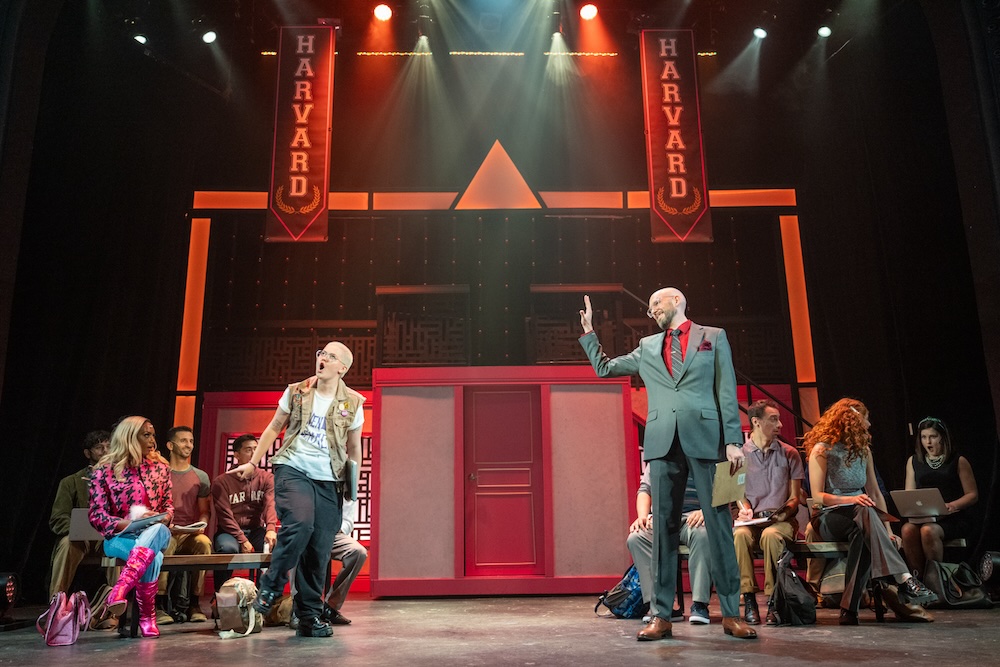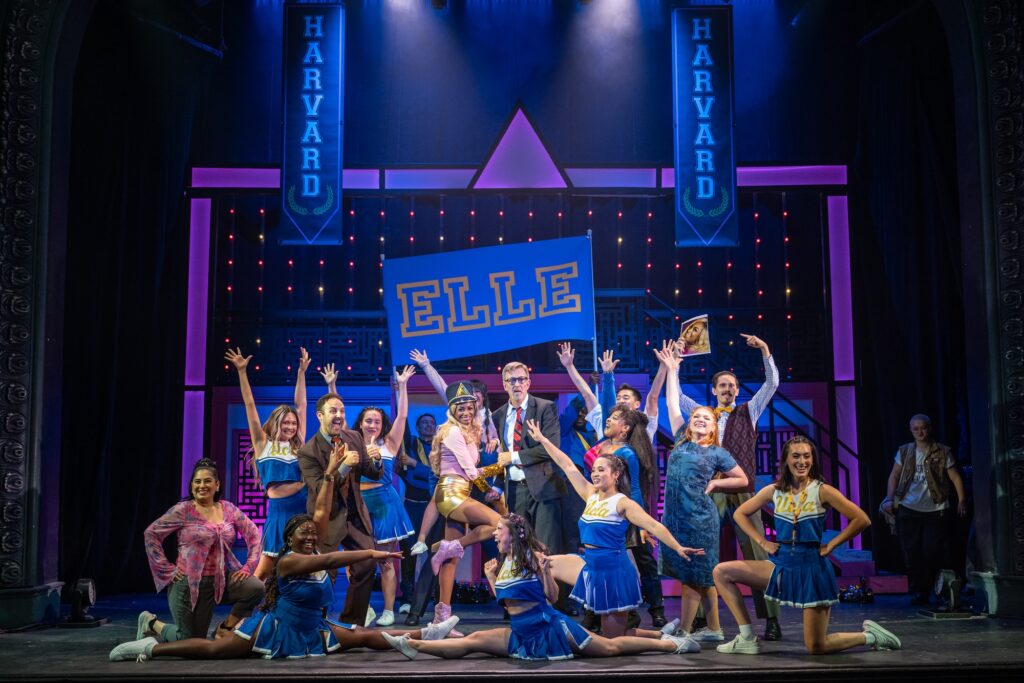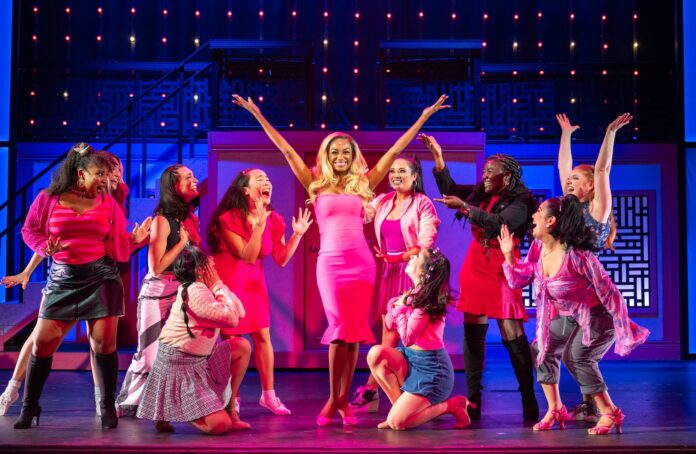It’s sadly unsurprising that women are still seen by (male) corporate bigwigs as a simplified demographic, even in 2024.
When Amanda Brown’s debut novel Legally Blonde hit bookshelves in the watershed year of 2001—with the film released that same year—it was immediately dismissed as “chick-lit,” despite the financial returns conclusively proving there was an eager audience for the work. Much like fellow Millennial-fave The Devil Wears Prada, neither Hollywood nor NY publishers had any interest in Legally Blonde as anything more than a calendar-filler, which only proved the point of the story’s “glass ceiling” narrative. One can (rightfully) argue all day about how sincere any feminist message can be when seen through the prism of Hollywood sheen, but Hollywood is a business, and businessmen can’t deny how lucrative these easily-dismissed “chick” properties have proven.
Elle Woods helped lay the pink bricks on the path Barbie sprinted along.
Legally Blonde’s appeal was recognized in hindsight, leading to a sequel (with another supposedly on the way), a straight-to-video spin-off, and (like The Devil Wears Prada) a big Broadway musical—the latter of which is currently being staged by SF’s Ray of Light Theatre (through September 29 at Victoria Theatre, SF). Their version distinguishes itself by attempting to add something the franchise—like Barbie, The Devil Wears Prada, etc.—noticeably lacked: diversity. As directed by Phaedra Tillery-Boughton and ShawnJ West, ROLT’s version replaces Reese Witherspoon with Majesty Scott to see if the story’s “Girl Power” message works just as well with a lead of a darker hue.
If you’re unfamiliar: Our story follows vapid UCLA sorority girl Elle Woods (Scott), whose titular shiny mane is matched by her stereotypical love of retail therapy. So, it makes sense that Elle would eventually settle down with fellow trust-fund baby Warner (Seth Hanson). But he unceremoniously dumps her before heading off to Harvard Law and a future all-but-guaranteed to a privileged white heir like him.

Yet, there is a functioning brain beneath those golden locks. So, when Elle gets it into her head to also enroll in Harvard Law, it proves to be just one-of-many instances showing how foolish it is to underestimate her. Best of all, though she may have enrolled in the hopes of winning back her boy, she soon finds that she and her pink couture belong there just as much as everyone else.
One thing I’ve personally always liked about Legally Blonde is that it’s ultimately about the power of women support other women. Like 9-to-5 before it, the story Elle Woods at Harvard Law uses the sitcom template to lampoon male fragility and patriarchy through the use of a supposedly “dumb” blonde and her friends. Both are white-het-norm as all hell, but that doesn’t take away from visceral pleasure of watching the ladies get the better of the guys that done ‘em wrong.
Legally Blonde: The Musical tries to maintain this, but loses something with the removal of the character of Professor Elspeth Stromwell (played by Holland Taylor in the film). Stromwell was a woman that had made it to a position of authority, but seemed almost resentful of Elle rather than encouraging. When Stromwell appears at the beauty parlor (out of the academic setting) to give Elle a crucial vote of confidence when the latter is at her lowest, it speaks to the necessity of elders to lift up—not coddle—their successors rather than trying to knock them back down through “hard-knock lessons.” The musical has mixed success assigning this role to Vivienne (winningly played by Kaylee Miltersen), Elle romantic rival-turned-climactic ally. Granted, it does give Vivienne a more pronounced arc, but misses the commentary about generational influence.
Help us save local journalism!
Every tax-deductible donation helps us grow to cover the issues that mean the most to our community. Become a 48 Hills Hero and support the only daily progressive news source in the Bay Area.

Then, of course, there’s this production’s semi-racially-blind casting. It’s always a thin line to walk when a character’s ethnicity is so pronounced in the text itself—I’d never want to see a white Othello, an all-white version of The Wiz, or that infamous “white MLK” version of Katori Hall’s Mountaintop—though casting a Black woman in a white role is a notable step towards still-needed diversity. The problem is that the text is so based around Elle as a privileged white girl that watching this version’s attempts to make her a Hilary Banks-style bougie girl almost seems like they’re skirting past the inherent racial issues that would pile on top of the sexism Elle encounters.
Harvard, like all Ivy League institutions, has a history of gross racism that still continues to this day. Considering both that and the directors’ clear choice to have Scott (who is a fine vocalist) play up her Blackness as much as possible, it makes the casting less a non-issue so much as the unacknowledged elephant in the room.
I saw the show during its final preview, which had a few technical issues (mic audio would drop out here and there) and a bit of low energy amongst certain ensemble members. Maybe they were saving it for opening the next night, but the contrast between certain line deliveries compared to Jill Jacobs’ energetic choreo was noticeable. Mind you, the overall ensemble did well, with Mickey Skinner a particular stand-out as Elle’s militantly feminist classmate Enid. In fact, Enid’s more-pronounced lesbianism is one of the musical’s major improvements over the source material, as this version revels in being unabashedly queer. Yet, that again makes ignoring the racial aspect more pronounced.
The songs are adequately catchy. I remember first hearing “Omigod You Guys!” in 2007 when it was iTunes free song of the week, and it’s no less infectious now. Given the big-yet-subdued nature of the story, going “full big” by turning Elle’s video essay into a pep rally (“What You Want”) and somehow making the gay pool boy even gayer (“There! Right There!”) actually seem like natural progressions in adaptations.

Although I didn’t show up to the Victoria Theatre wearing pink (I almost wore my official “Silence = Death” t-shirt, which would have tangentially made me blend in with the rest of the audience), I did show up in my Flo Mask and safety glasses. I saw maybe four or five other patrons masked during this full-house final preview. The Victoria being an old building, I went in with my Flo Mask already expecting iffy numbers to pop up on my Aranet4. It read CO² levels of 1,890ppm when the show broke for intermission, with the second act finishing at 1,856ppm by the final bow.
Despite pink being the signature color of its titular lead, Legally Blonde is still a very “white” story. The sexism portrayed is very much grounded in reality, but it still takes place in what is clearly an insulated world of Eurocentrism and inherited wealth. Try as it might, this production can’t get around such an overt part of the text. Still, the show is a catchy addition to the beloved franchise, and clearly won over the all-ages (and considerably queer) audience of its final preview. If a pastel-colored strike against sexism is what you’re in the mood for, you should get a lot of fun out of it.
Just be sure to wear pink.
LEGALLY BLONDE: THE MUSICAL runs through September 29 at the Victoria Theatre, SF. Tickets and further info here.





